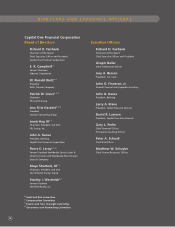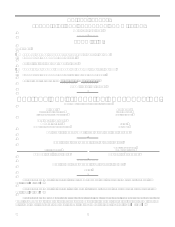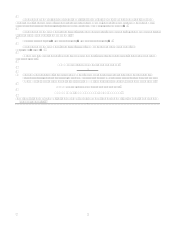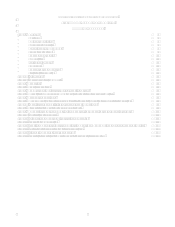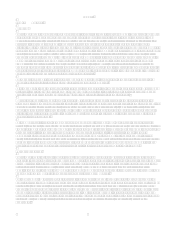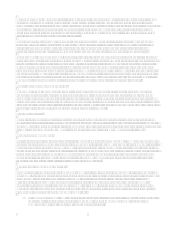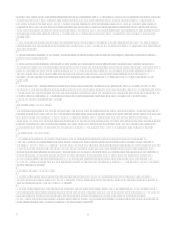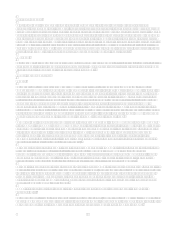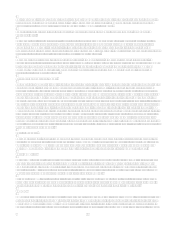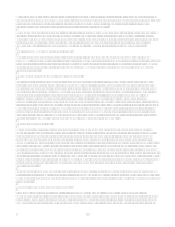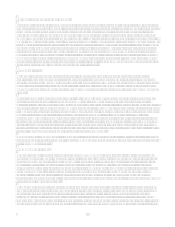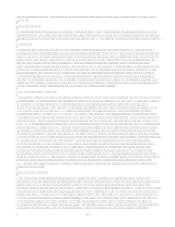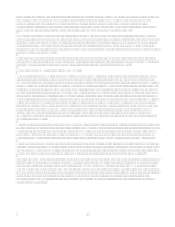Capital One 2006 Annual Report Download - page 26
Download and view the complete annual report
Please find page 26 of the 2006 Capital One annual report below. You can navigate through the pages in the report by either clicking on the pages listed below, or by using the keyword search tool below to find specific information within the annual report. 8
level. The Chief Credit Officers, their staff, or the appropriate credit committee review and approve all large scale new credit
decisions or programs. Smaller credit decisions are approved by credit officers appointed by the credit committee(s) and
supervised by the Credit Risk Management organization. It is expected that all credit programs and major credit decisions
will also be approved by the appropriate operating executives. These organizational structures are designed so that each of
our business units applies standardized practices in measuring and managing credit risk, and that all relevant factors, such as
credit outlook, profitability, and the competitive, economic, and regulatory environment, are considered in making credit
decisions.
The Board of Directors has established policies that govern credit administration and limit the level and composition of risk
in the total lending portfolio. The centralized Credit Risk Management group monitors overall composition and quality of the
credit portfolio.
Our credit risk profile is managed to maintain resilience to factors outside of our control, strong risk-adjusted returns, and
increased diversification.
Our guiding principles, strong central governance, and Board-directed credit risk tolerances are designed to keep senior
executives well-informed of credit trends so they can make appropriate credit and business decisions for us. We preserve day-
to-day market responsiveness and flexibility by empowering our business line managers to develop credit strategies and
programs aligned with our credit risk policies and objective of long-term business profitability. The credit program
development process considers the evolving needs of the target market, the competitive environment, and the economic
outlook.
Most of our consumer credit strategies rely heavily on the use of sophisticated proprietary scoring models. These models
consider many variables, including credit scores developed by nationally recognized scoring firms. The models are validated,
monitored and maintained in accordance with detailed policies and procedures to help maintain their continued validity. Our
Chief Scoring Officer, a member of the Chief Risk Officers staff, oversees the development, implementation and
maintenance of key statistical models.
Liquidity Risk Management
Liquidity risk refers to exposures generated from the use and availability of various funding sources to meet our current and
future operating needs. The management of liquidity risk is overseen by the Chief Financial Officer with advice and guidance
from the Asset and Liability Management Committee and its sub-committee on funding chaired by the Treasurer. We
currently manage and mitigate our liquidity risk through the use of a variety of funding sources to establish a maturity pattern
that provides a prudent mixture of short-term and long-term funds. See page 48 in Item 7 Managements Discussion and
Analysis of Financial Condition and Results of OperationsLiquidity Risk Management for additional information.
Market Risk Management
Market risk refers to exposures generated from changes in interest rates and foreign currency exchange rates. The
management of market risk is overseen by the Chief Financial Officer with the advice and guidance from the Asset and
Liability Management Committee. We currently manage and mitigate our interest rate sensitivity through several techniques,
which include, but are not limited to, managing the maturity and repricing characteristics of assets and liabilities and by
entering into interest rate derivatives. We currently manage and mitigate our exposure to foreign currency exchange risk by
entering into forward foreign currency exchange contracts and cross currency swaps. The hedging of foreign currency
exchange rates is limited to certain intercompany obligations related to international operations. See page 51 in Item 7
Managements Discussion and Analysis of Financial Condition and Results of OperationsMarket Risk Management for
additional information.
Operational Risk Management
Operational risk is the risk of direct or indirect loss resulting from inadequate or failed processes, systems, people, or
exposure to external events. The management of operational risk is overseen by the Chief Risk Officer with the advice and
guidance of the Risk Management Committee.
Operational risk is a normal part of business for any financial services firm. It may manifest itself in many ways, including
business interruptions, errors related to processing and systems, or fraud by employees or persons outside the Company. The
risk of loss includes the potential for legal actions arising as a result of an operational deficiency or as a result of
noncompliance with applicable laws or regulatory standards. We could also suffer financial loss, face regulatory action, not
be able to service customers and suffer damage to our reputation.




